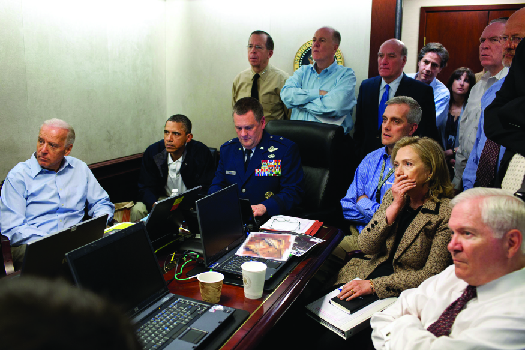| << Chapter < Page | Chapter >> Page > |
The challenge of pinpointing the appropriate role of government may sound more like a domestic than a foreign policy matter, and to some degree it is an internal choice about the way government interacts with the people. Yet the internal (or domestic) relationship between a government and its people can often become intertwined with foreign policy. For example, the narrow stance on personal liberty that Iran has taken in recent decades led other countries to impose economic sanctions that crippled the country internally. Some of these sanctions have eased in light of the new nuclear deal with Iran. So the domestic and foreign policy realms are intertwined in terms of what we view as national priorities—whether they consist of nation building abroad or infrastructure building here at home, for example. This latter choice is often described as the “ guns versus butter ” debate.
A third, and related, unique challenge for the United States in the foreign policy realm is other countries’ varying ideas about the appropriate form of government. These forms range from democracies on one side to various authoritarian (or nondemocratic) forms of government on the other. Relations between the United States and democratic states tend to operate more smoothly, proceeding from the shared core assumption that government’s authority comes from the people. Monarchies and other nondemocratic forms of government do not share this assumption, which can complicate foreign policy discussions immensely. People in the United States often assume that people who live in a nondemocratic country would prefer to live in a democratic one. However, in some regions of the world, such as the Middle East, this does not seem to be the case—people often prefer having stability within a nondemocratic system over changing to a less predictable democratic form of government. Or they may believe in a theocratic form of government. And the United States does have formal relations with some more totalitarian and monarchical governments, such as Saudi Arabia, when it is in U.S. interests to do so.
A fourth challenge is that many new foreign policy issues transcend borders. That is, there are no longer simply friendly states and enemy states. Problems around the world that might affect the United States, such as terrorism, the international slave trade, and climate change, originate with groups and issues that are not country-specific. They are transnational. So, for example, while we can readily name the enemies of the Allied forces in World War II (Germany, Italy, and Japan), the U.S. war against terrorism has been aimed at terrorist groups that do not fit neatly within the borders of any one country with which the United States could quickly interact to solve the problem. Intelligence-gathering and focused military intervention are needed more than traditional diplomatic relations, and relations can become complicated when the United States wants to pursue terrorists within other countries’ borders. An ongoing example is the use of U.S. drone strikes on terrorist targets within the nation of Pakistan, in addition to the 2011 campaign that resulted in the death of Osama bin Laden, the founder of al-Qaeda ( [link] ).

The fifth and final unique challenge is the varying conditions of the countries in the world and their effect on what is possible in terms of foreign policy and diplomatic relations. Relations between the United States and a stable industrial democracy are going to be easier than between the United States and an unstable developing country being run by a military junta (a group that has taken control of the government by force). Moreover, an unstable country will be more focused on establishing internal stability than on broader world concerns like environmental policy. In fact, developing countries are temporarily exempt from the requirements of certain treaties while they seek to develop stable industrial and governmental frameworks.
The Council on Foreign Relations is one of the nation’s oldest organizations that exist to promote thoughtful discussion on U.S. foreign policy.
As the president, Congress, and others carry out U.S. foreign policy in the areas of trade, diplomacy, defense, intelligence, foreign aid, and global environmental policy, they pursue a variety of objectives and face a multitude of challenges. The four main objectives of U.S. foreign policy are the protection of the United States and its citizens and allies, the assurance of continuing access to international resources and markets, the preservation of a balance of power in the world, and the protection of human rights and democracy.
The challenges of the massive and complex enterprise of U.S. foreign policy are many. First, there exists no true world-level authority dictating how the nations of the world should relate to one another. A second challenge is the widely differing views among countries about the role of government in people’s lives. A third is other countries’ varying ideas about the appropriate form of government. A fourth challenge is that many new foreign policy issues transcend borders. Finally, the varying conditions of the countries in the world affect what is possible in foreign policy and diplomatic relations.

Notification Switch
Would you like to follow the 'American government' conversation and receive update notifications?